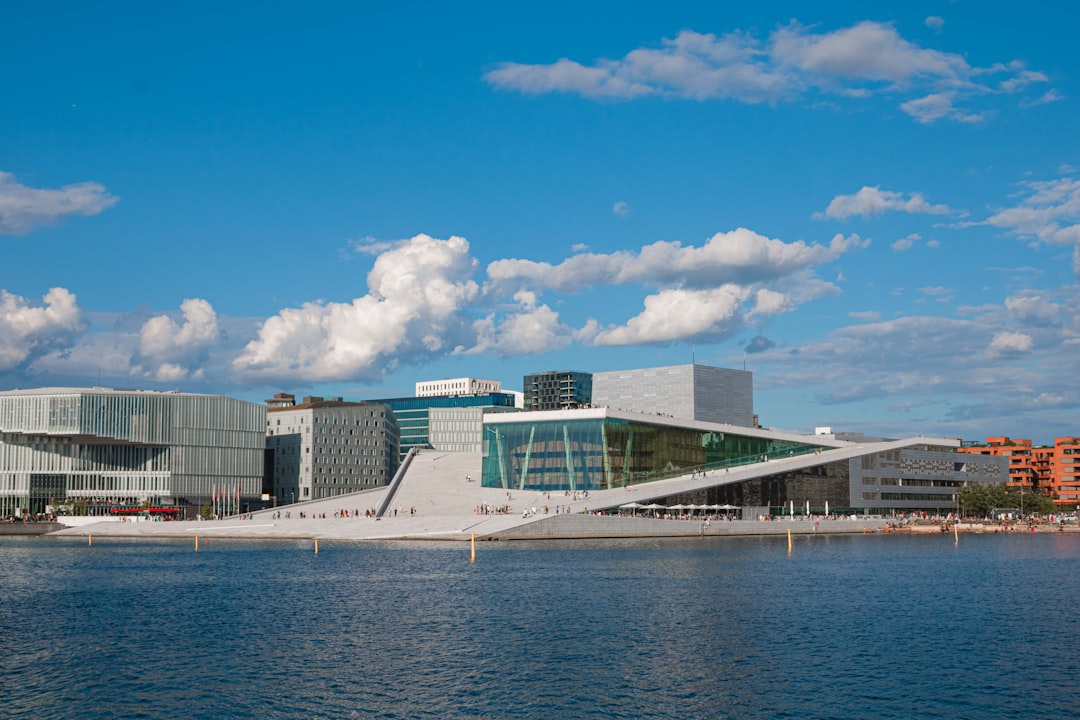The Norwegian housing market has long been a subject of interest for both domestic and international observers. Characterised by its unique blend of natural beauty and urban sophistication, Norway’s real estate landscape is shaped by a variety of factors, including geographical diversity, economic stability, and cultural nuances. The market is not only a reflection of the country’s economic health but also an indicator of societal trends and shifts in lifestyle preferences.
As we delve into the intricacies of this market, it becomes evident that understanding its dynamics is crucial for potential buyers, investors, and policymakers alike. In recent years, the Norwegian housing market has experienced significant fluctuations, driven by a combination of local and global influences. The interplay between supply and demand, interest rates, and government regulations has created a complex environment that requires careful navigation.
As we look towards 2025, it is essential to examine the various factors that will shape the future of this market, as well as the opportunities and challenges that lie ahead. Take the first step. Book a consultation with the Norway Relocation Group for your move to Norway. https://norwayrelocation.no/one-hour-strategy-session/
Summary
- The Norwegian housing market is influenced by various factors such as government policies, regional variations, and foreign investment.
- Government policies play a significant role in shaping the housing market, impacting affordability and sustainability initiatives.
- Regional variations in the housing market can lead to disparities in pricing and demand across different areas of Norway.
- Demographics, foreign investment, and technological advancements all have a significant impact on housing demand and market trends.
- The future of the Norwegian housing market is likely to be shaped by sustainability initiatives, technological advancements, and government policies, presenting both challenges and opportunities for investors and homeowners.
Factors Influencing the 2025 Housing Market
Several key factors are poised to influence the Norwegian housing market as we approach 2025. One of the most significant is the ongoing economic recovery following the global pandemic. As Norway emerges from the economic challenges posed by COVID-19, consumer confidence is expected to rebound, leading to increased demand for housing.
This resurgence in economic activity will likely stimulate both new construction and renovations, further impacting the housing supply. Another critical factor is the interest rate environment. The Norges Bank’s monetary policy decisions will play a pivotal role in shaping borrowing costs for potential homeowners.
If interest rates remain low, it could encourage more individuals to enter the housing market, driving up demand and potentially leading to higher prices. Conversely, if rates rise significantly, it may dampen enthusiasm among buyers and slow down market activity. The balance between these forces will be crucial in determining the trajectory of the housing market in the coming years.
Regional Variations in the Norwegian Housing Market

Norway’s diverse geography contributes to significant regional variations in its housing market. Urban centres like Oslo and Bergen often experience higher demand and prices compared to rural areas. In Oslo, for instance, the combination of a growing population, a robust job market, and limited housing supply has led to soaring property prices.
This trend is expected to continue as more people flock to cities for employment opportunities and lifestyle amenities. In contrast, rural regions may face challenges such as depopulation and declining demand for housing. As younger generations migrate to urban areas in search of better prospects, some rural communities are left with an oversupply of homes.
This disparity highlights the importance of understanding local market conditions when considering real estate investments in Norway. Investors must be aware of these regional differences to make informed decisions that align with their financial goals.
The Impact of Government Policies on Housing
Government policies play a crucial role in shaping the Norwegian housing market. Various initiatives aimed at promoting homeownership, regulating rental markets, and ensuring affordable housing have been implemented over the years. For instance, the Norwegian government has introduced schemes to assist first-time buyers, such as grants and favourable loan conditions.
These measures are designed to make homeownership more accessible and stimulate demand in the housing sector. Additionally, regulations surrounding rental properties have evolved to protect tenants while also ensuring that landlords can maintain their investments. Striking a balance between tenant rights and landlord interests is essential for fostering a healthy rental market.
As we look towards 2025, it will be important to monitor any changes in government policies that could impact housing supply, affordability, and overall market dynamics.
Trends in Housing Prices and Affordability
The trends in housing prices across Norway have been marked by significant fluctuations in recent years. Following a period of rapid price growth, many regions have begun to see a stabilisation or even a slight decline in property values. This shift can be attributed to various factors, including changes in buyer sentiment, increased construction activity, and adjustments in interest rates.
Affordability remains a pressing concern for many prospective homeowners, particularly in urban areas where prices have outpaced wage growth. The challenge of finding affordable housing is exacerbated by rising living costs and stagnant income levels for some segments of the population. As we approach 2025, addressing affordability will be paramount for policymakers and stakeholders in the housing sector to ensure that homeownership remains within reach for a broader demographic.
The Role of Technology in the Housing Market

Technology is increasingly transforming the Norwegian housing market, influencing how properties are bought, sold, and managed. The rise of digital platforms has streamlined the process of searching for homes, allowing buyers to access a wealth of information at their fingertips. Virtual tours, online listings, and digital transactions have made it easier for prospective homeowners to explore options without needing to visit properties physically.
Moreover, technology is also playing a role in property management and investment strategies. Smart home technologies are becoming more prevalent, enhancing energy efficiency and convenience for homeowners. As these innovations continue to evolve, they will likely shape buyer preferences and expectations in the housing market.
Embracing technology will be essential for real estate professionals looking to stay competitive in an increasingly digital landscape.
Sustainability and Green Initiatives in the Housing Sector
Sustainability has emerged as a key consideration within the Norwegian housing market, reflecting broader societal concerns about climate change and environmental impact. The government has implemented various initiatives aimed at promoting green building practices and energy-efficient homes. These efforts not only contribute to reducing carbon emissions but also appeal to environmentally conscious buyers who prioritise sustainability in their purchasing decisions.
As we move towards 2025, the demand for sustainable housing solutions is expected to grow. Developers are increasingly incorporating eco-friendly materials and technologies into their projects, responding to consumer preferences for energy-efficient homes. This shift towards sustainability presents both challenges and opportunities for stakeholders in the housing sector as they navigate evolving regulations and consumer expectations.
The Influence of Demographics on Housing Demand
Demographic trends play a significant role in shaping housing demand across Norway. The ageing population is one such trend that will have profound implications for the housing market in the coming years. As more individuals enter retirement age, there will be an increased demand for accessible housing options that cater to older adults’ needs.
This shift may lead to a rise in demand for smaller homes or retirement communities designed with accessibility in mind. Additionally, changing family structures and lifestyle preferences are influencing housing demand as well. Younger generations are increasingly prioritising flexibility and mobility over traditional homeownership models.
This trend may result in greater interest in rental properties or co-living arrangements as individuals seek affordable options that align with their evolving lifestyles.
Foreign Investment and its Effects on the Housing Market
Foreign investment has become an increasingly prominent factor in the Norwegian housing market, particularly in urban areas like Oslo. International buyers are drawn to Norway’s stable economy and high quality of life, leading to increased competition for properties. While foreign investment can stimulate economic growth and development, it also raises concerns about affordability for local residents.
As we approach 2025, it will be essential to monitor how foreign investment trends evolve and their impact on local housing markets. Policymakers may need to consider measures that ensure a balance between attracting foreign capital while safeguarding access to affordable housing for Norwegian citizens.
Challenges and Opportunities in the Norwegian Housing Market
The Norwegian housing market faces several challenges as it navigates an ever-changing landscape. Affordability remains a significant hurdle for many potential buyers, particularly in urban centres where prices have surged in recent years. Additionally, regional disparities pose challenges for policymakers seeking to create equitable access to housing across the country.
However, these challenges also present opportunities for innovation and growth within the sector. The increasing focus on sustainability offers developers a chance to differentiate themselves by creating eco-friendly homes that appeal to environmentally conscious buyers. Furthermore, advancements in technology can streamline processes and enhance customer experiences, providing real estate professionals with new avenues for success.
Predictions for the Future of the Norwegian Housing Market
Looking ahead to 2025, several predictions can be made regarding the future of the Norwegian housing market. Economic recovery from the pandemic is likely to drive increased demand for housing as consumer confidence returns. However, this demand may be tempered by rising interest rates or changes in government policies aimed at curbing speculation.
Regional variations will continue to play a significant role in shaping market dynamics, with urban areas likely experiencing sustained demand while rural regions may face ongoing challenges related to depopulation. Ultimately, adaptability will be key for stakeholders navigating this evolving landscape as they respond to shifting consumer preferences and external influences. In conclusion, as we explore the complexities of the Norwegian housing market leading up to 2025, it becomes clear that understanding its multifaceted nature is essential for all involved parties.
From government policies to demographic shifts and technological advancements, each factor contributes to shaping this dynamic landscape. For those looking to immerse themselves further into Norwegian culture—perhaps even considering property investment—learning the language can be invaluable. The NLS Norwegian Language School in Oslo offers comprehensive courses tailored for all levels of learners.
By mastering Norwegian through their expert-led programmes, individuals can enhance their understanding of local customs and nuances within the housing market while fostering deeper connections within this beautiful country.
Learn more about the Norwegian classes at the NLS Norwegian Language School in Oslo

